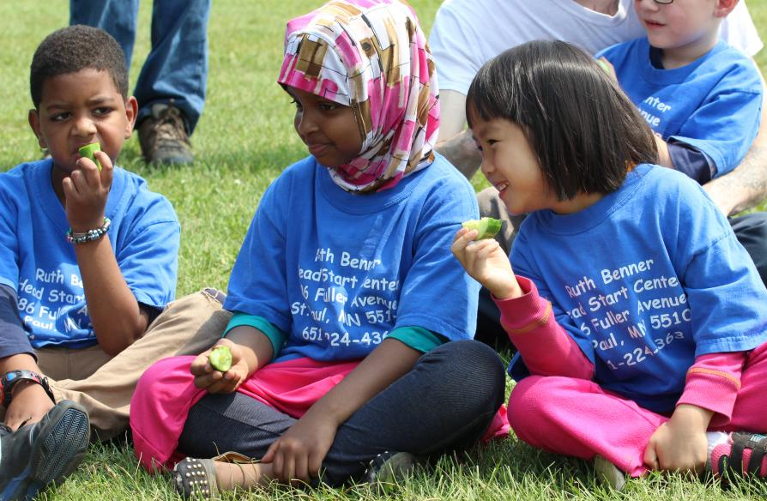Download a PDF of the case study.
Through a strong partnership with mission-aligned organizations, the Community Action Partnership of Ramsey & Washington Counties (Community Action) Head Start Program worked with the Hmong American Farmers Association (HAFA) and the Institute for Agriculture and Trade Policy (IATP) to launch the first Farm to Head Start initiative in Minnesota in 2014, and has been working to strengthen and expand their Farm to Head Start work ever since. From celebrating cultural traditions through diverse lunch recipes and dynamic classroom activities, to popular family engagement events and joyous field trips to HAFA’s farm at harvest time, Community Action’s initiative builds on Saint Paul’s diversity to bring nutrition to life.
Establishing value-driven partnerships
After developing a successful Farm to Early Care model with New Horizon Academy in 2012, IATP had several goals for the next iteration of this work, including expanding access to fresh, healthy foods for communities that are disproportionately affected by diet-related disease, building deeper relationships between farmers and the early care families in their communities and strengthening the resonance of Farm to Early Care activities by exploring the deep connections between food and cultural traditions. A first step in expanding access to fresh, healthy foods was focusing on partnerships with Head Start Programs, which specifically serve low-income families who face structural barriers to healthy food access and, consequently, have higher rates of diet-related disease.
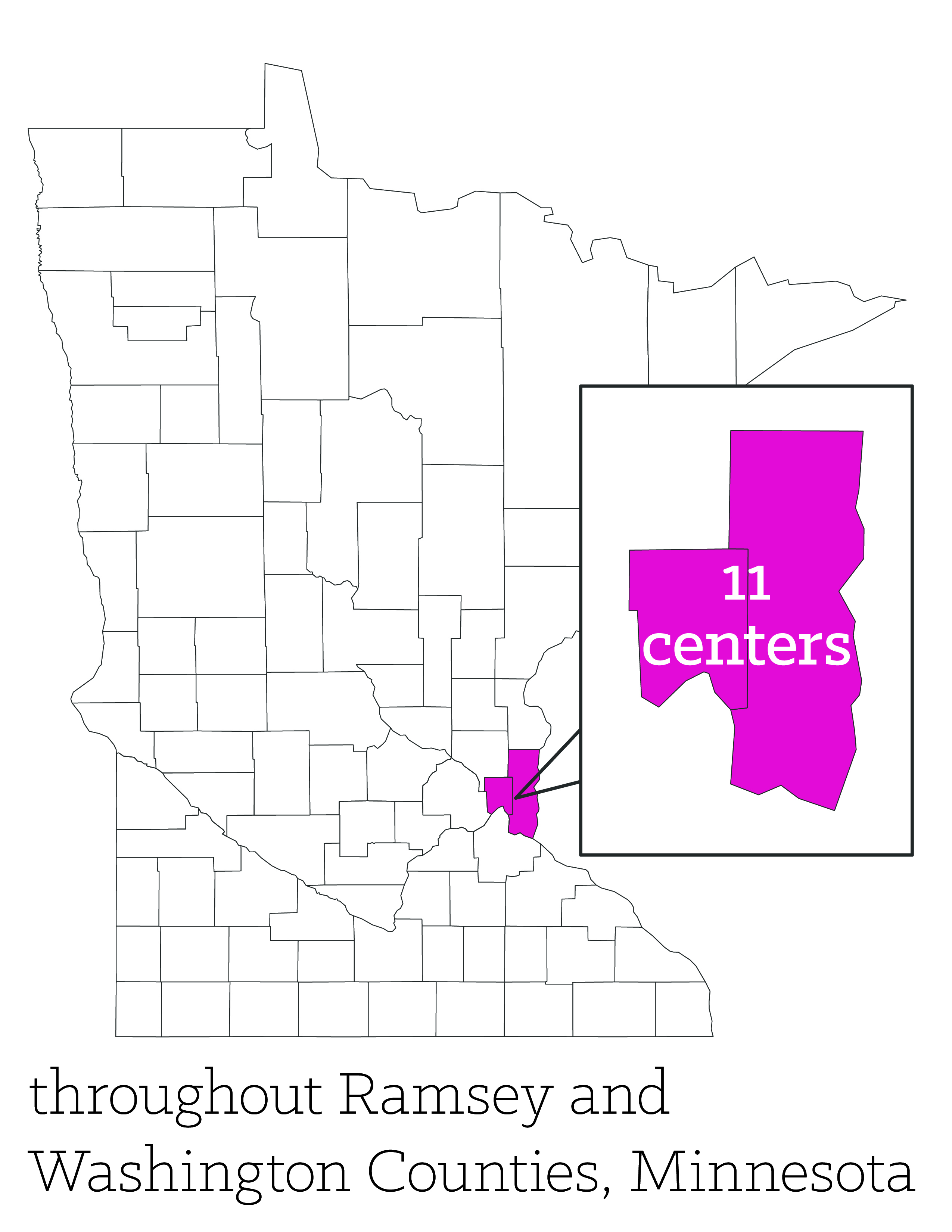
Through contacts at the Minnesota Head Start Association, in 2014 IATP’s Community Food Systems Director Erin McKee connected with Angela Prokop, Nutrition Coordinator for Community Action’s Head Start Program in Saint Paul. One of Community Action’s major goals was to improve the nutrition of their children, and Prokop saw Farm to Head Start as a great strategy for encouraging kids to try—and, hopefully, like—fresh, healthy foods while learning where they come from. Head Start center-based locations participating in the Farm to Head Start initiative care for children aged three to five years of age, just when they are beginning to develop their taste preferences. Kids at this age can eat up to 80 percent of their daily nutrients while in Early Care environments, creating a huge opportunity to encourage a good relationship with healthy foods from a young age and to set healthy eating habits for the rest of their lives. One of Prokop’s main goals for Farm to Head Start was to support local growers, embodying Head Start’s goal of empowering communities and increasing the service of fresh vegetables on the menu. Community Action was excited by the prospect of a strong, lasting relationship with HAFA.
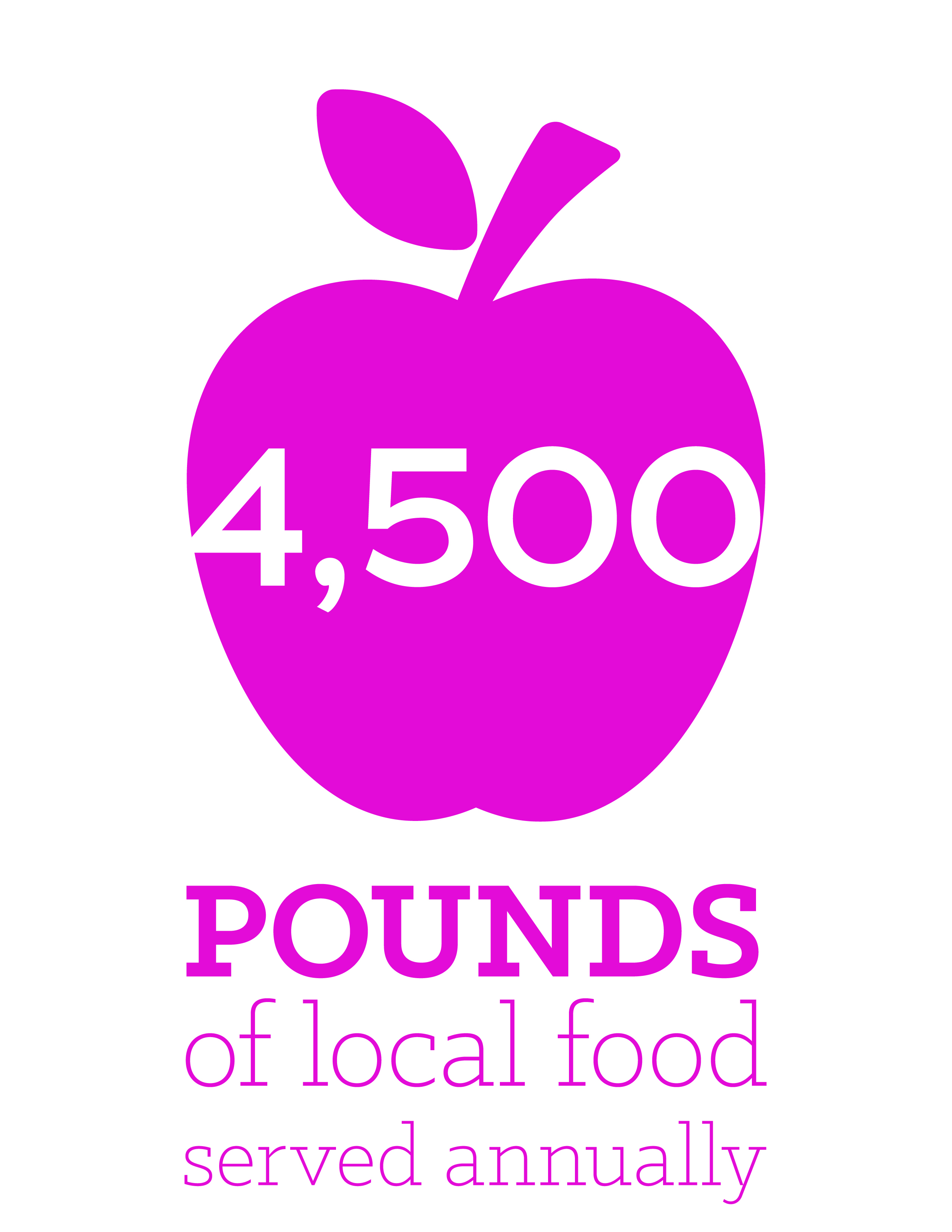
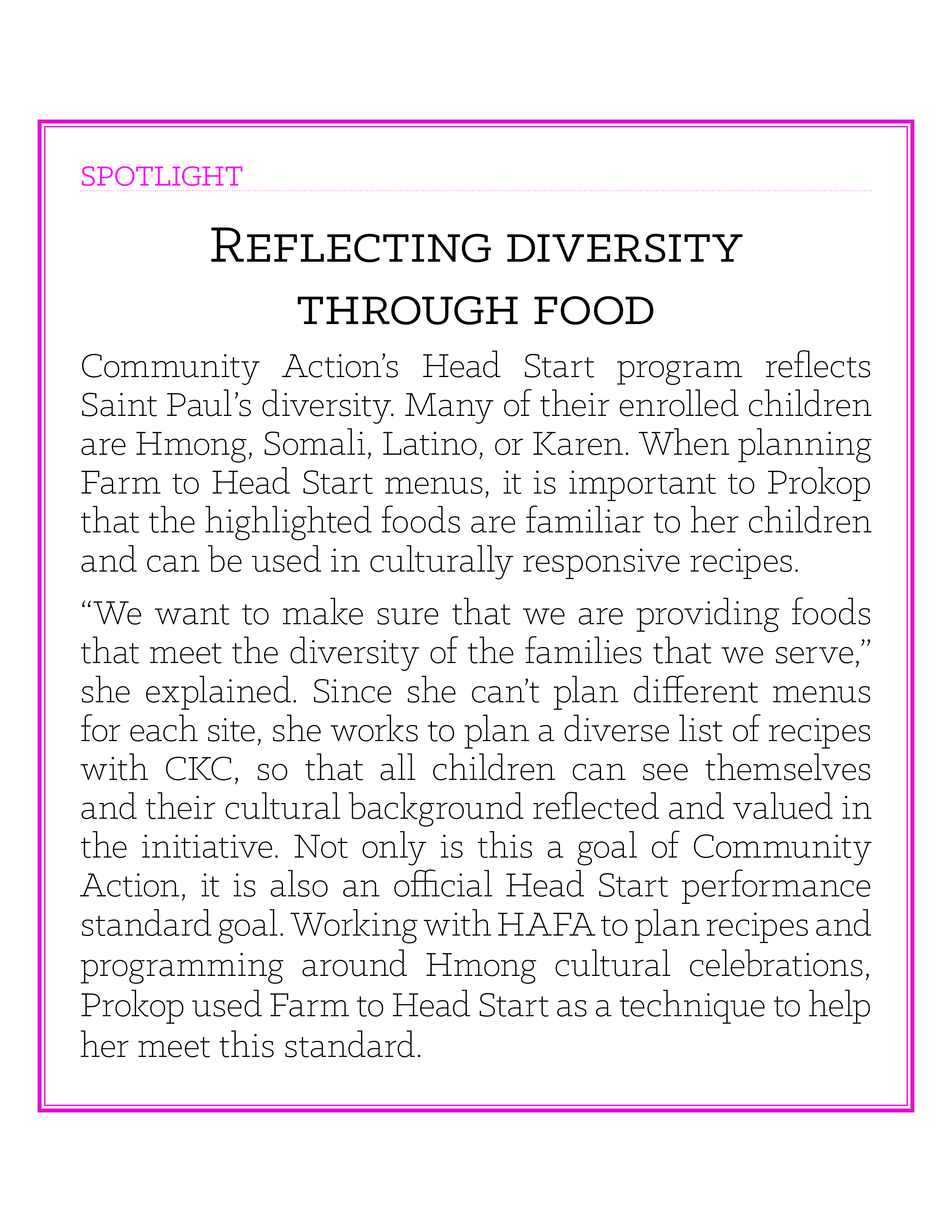
At the same time, she was meeting with Prokop, McKee was in conversation with Pakou Hang, the Executive Director and co-founder of the Hmong American Farmers Association (HAFA). Since Hmong refugees came to Minnesota in the 1970s, many have relied on their deep agricultural traditions to make a living but continue to face systemic barriers to accessing land and financing their operations. With a goal of generating wealth for their community, HAFA manages a 155-acre farm outside Saint Paul, where farmer-members can lease land to grow on and sell crops through the HAFA Food Hub, while getting training and support from HAFA staff.
In 2014, most HAFA farmers’ sales were direct-to-consumer at farmers markets, which required long hours with no guarantee of sales. HAFA was interested in institutional markets as a strategy to diversify their growers’ incomes with more reliable, larger sales. When looking for partners, HAFA prioritized organizations that reflected their organizational values. Mirroring the greater community, Community Action enrolls a large number of Hmong children in their Head Start program; several HAFA farmers and staff had personal or familial connections to Community Action. For Hang, a self-described “Head Start kid,” selling to Head Start meant providing children from her community with nutritious, local food and giving them an opportunity to engage with their heritage through traditional ingredients and dishes.
The ease and success with which Prokop, Hang, and McKee worked together was tied to the guiding principles that they shared. Each came from a social justice-oriented organization and valued the benefits of providing children with nutritious, locally grown food at a formative age. Establishing these shared values, and outlining commitments, from the first meeting onward helped them stay unified in the face of later hurdles.
Additionally for Hang, their strong relationship was a result of everyone having come to the project at the beginning, as equal partners: “Talking it through [together] that first time was very good, as opposed to if IATP and Head Start had worked together and then we had come in. I think the power dynamics would have been a little bit different.”
Bringing on a caterer and food processor
After two months of planning discussions between Prokop, Hang, and McKee it was time to approach Community Actions caterer. CKC Good Food is the South Saint Paul-based, woman-owned catering company that sources and prepares all Community Action’s meals and snacks. Prokop wondered whether Farm to Head Start would be feasible, given the fact that she couldn’t control where CKC sourced their food. Luckily, CKC was eager to get on board. Again, this successful partnership was a result of CKC’s alignment with Head Start’s values.
Together, they began planning the Farm to Head Start initiative in detail. Community Action, HAFA, and IATP worked to develop a schedule of highlighted foods for the coming school year, then met with CKC to review the calendar and discuss recipe guidelines. CKC developed recipes, finalized quantities and submitted the recipes for Community Action’s approval. It was then up to CKC to communicate the necessary quantities to HAFA.
Since Community Action serves roughly 1,200 kids during the school year, it became apparent to CKC that processing and preparing raw, whole foods for this number of meals would be a near-impossible burden. HAFA brought on Russ Davis Wholesale, an employee-owned processing company HAFA had worked with in the past to wash, chop and slice their produce before delivering it to customers. Again, in Russ Davis, Community Action found a mission-aligned organization willing to purchase from small- to mid-sized farmers and partner on Farm to Head Start. Based on their recipes, CKC communicated necessary processing needs to Russ Davis.
The next step was to form a Farm to Head Start Leadership Team, made up of Prokop, Hang, McKee, and representatives from CKC and Russ Davis. Together, they worked to finalize planning for the initiative’s launch. It was this initial planning phase, from February 2014 to the beginning of the summer that was the most time-intensive period for the project. Once a framework was established, the added workload for members of the Leadership Team decreased.
The Leadership Team decided that Community Action would pilot their initiative in the summer of 2014. At the time, Community Action operated 11 centers during the year, but only two during the summer. Financially, it was impossible for Russ Davis to process such a small amount of food for only two centers. As a solution, during the summer, CKC agreed to receive the food directly from HAFA; they would process and cook it in Community Action’s main kitchen. CKC had concerns about verifying the safety of foods brought in directly from the farm, so HAFA shared details of its food safety training, completed by a licensed food safety contractor.
In the fall, all eleven Head Start centers started their regular session and the initiative began in earnest. Each center included the produce from HAFA in their meals, but only six enacted IATP’s accompanying Farm to Early Care curriculum, allowing Community Action to ease into the new initiative. Russ Davis joined as processor, and the school-year supply chain was established. Since 2014, Community Action has continued this supply chain. In the summer, the food is processed directly by CKC. During the school year, Russ Davis handles the larger volume. After the food is processed, CKC prepares it to varying extents at Community Action’s main kitchen at the Ruth Benner Head Start center. Community Action’s other centers have differing food service capacities; some of them receive the food ready to serve from Ruth Benner, and some receive and cook it themselves.
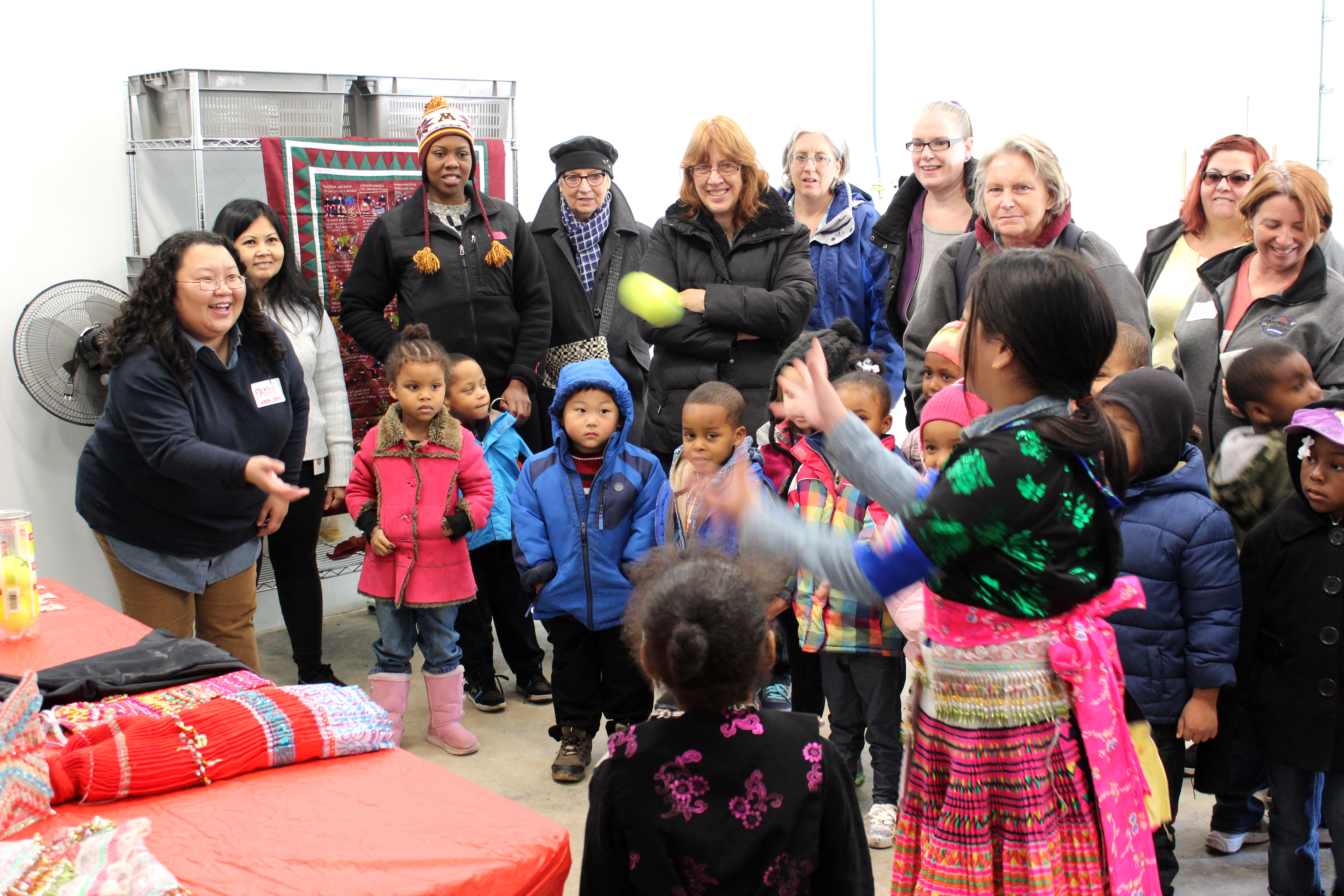
Using and modifying IATP’s Farm to Early Care model
Prokop took advantage of the Farm to Early Care educational curriculum developed by IATP, to significantly reduce workload for Community Action’s teachers. At the beginning of the year, Community Action incorporated Farm to Head Start training into already-scheduled professional development days. Prokop showed teachers how to incorporate Farm to Head Start topics into existing lesson plans and activities, and provided teachers with IATP’s Farm to Early Care curriculum. This curriculum includes complete lesson plans on a wide range of locally grown foods, as well as generalized food and farming-related lessons that classes can do if a highlighted food isn’t ready on time.
Prokop also made sure to include teachers in the Farm to Head Start planning process. She worked with them and used their feedback to modify IATP’s curriculum to reflect the needs of their community. In her experience, showing teachers they had a voice in Farm to Head Start greatly increased their buy-in and made them more enthusiastic Farm to Head Start role models.
At the same time, HAFA staff developed several new lessons for the Farm to Early Care curriculum, including lessons lifting up Hmong culture, lessons on farming practices and detailed farm field trip activity plans for groups of visiting children.
Learning by doing: Farm field trips and classroom highlights
Families and children alike look forward to the annual harvest field trip to HAFA’s farm. Not only does Community Action use farm visits as experiential learning opportunities for their children, but they invite families along as well, hoping to increase their engagement in Farm to Head Start. The harvest field trip always has amazing turnout, as children and families get to work with their hands to pick produce. Since their initial partnership with IATP, Community Action has been able to secure funding for these field trips through their strong alliance with HAFA. They have been able to jointly apply for grants, using their Farm to Head Start experience in crafting their narrative. HAFA has also received individual grants to help Community Action visit the farm and to provide educational resources to Community Action classrooms.
Outside of the harvest field trip, family engagement could be a challenge. The majority of Community Action’s children are bussed to Head Start, so teachers are unable to talk with families during pick-up and drop-off. Luckily, there’s a framework for family involvement built into the Head Start model. Each one of Community Action’s centers has a Parent Committee. These committees work with Community Action’s family advocates to plan monthly family events. Each year, Prokop works with the committees to design food and farming-related activities for a few of these events. She presents on Farm to Head Start, updates families on what their kids are learning and provides relevant activities for attendees. Building face-to-face communication with families through pre-existing channels helped circumvent language barriers and ensured that important information was communicated.
Refining the initiative
Community Action’s Farm to Head Start initiative is still going steady since its start in 2014. The strong, value-driven relationships formed between the core partner organizations remain in place today. Although there have been no major changes to the supply chain, or to the structure of the initiative, part of the initiative’s lasting strength has come from its flexibility, and the willingness of the Leadership Team to constantly reassess and adapt.
During Community Action’s pilot year, Prokop found that there was an undue burden on food service staff. The desire to have strong, culturally responsive content led to complex recipes, which created a lot of additional work. In the second year, Prokop worked with CKC to simplify recipes. A couple of delayed harvests during the first year meant that Community Action ended up with excess food at the end of their fall term. Prepping the food for storage over winter break and then bringing it out of storage after was an added burden on CKC staff. The following year, Prokop adjusted the schedule after late harvests or other hiccups to get all the highlighted foods served before break.
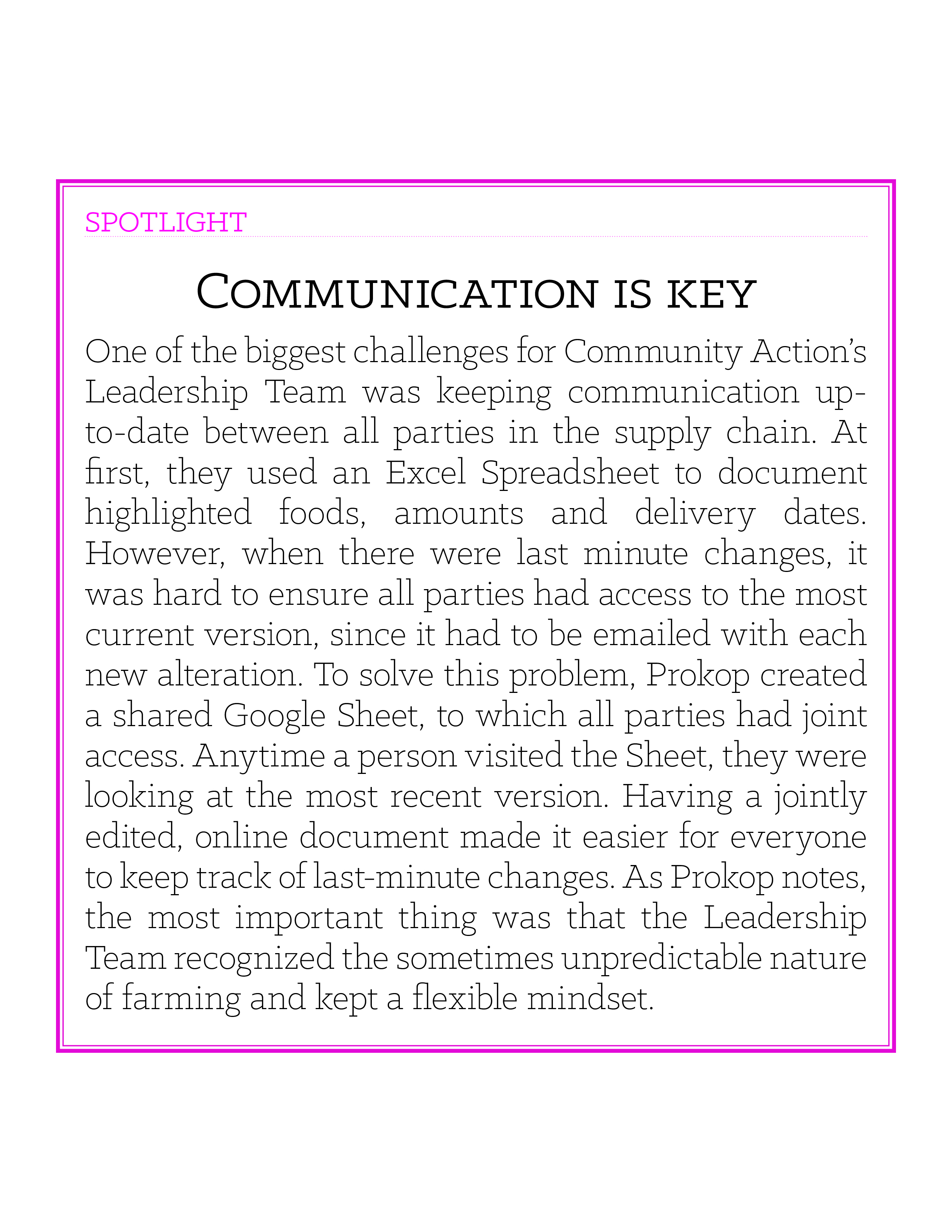
Prokop has made a strong effort to make Farm to Head Start financially feasible for both CKC and Russ Davis. Since Community Action was paying a flat rate per meal, CKC couldn’t adjust pricing according to the cost of ingredients. Because of this, Prokop made sure to bring CKC into initial meal planning and pricing discussions. By helping decide quantities and price points, CKC could ensure highlighted foods were available at a comfortable price. Community Action also makes an effort to use every part of the vegetable, keeping the yield higher and the price per ounce lower. They assessed and replaced foods and recipes that had been poorly received by children, thereby cutting down on food waste.
Prokop reports that all parties feel Farm to Head Start is financially viable. In 2017, when it came time for Community Action to renew CKC’s contract after a formal bid process, Community Action asked if CKC would like to increase the flat meal price in their contract; CKC declined, saying that their arrangement was economically responsible as is. Additionally, through working with a smaller grower, CKC and Russ Davis have learned skills that will enable them to partner with other smaller producers in the future.
Through constantly evaluating Community Action’s initiative, and receiving feedback from partners in regular check-in meetings, the Leadership Team was able to solve problems in a responsive and timely manner. This ensured that no one partner felt an undue burden and helped contribute to the lasting success of Community Action’s Farm to Head Start initiative.
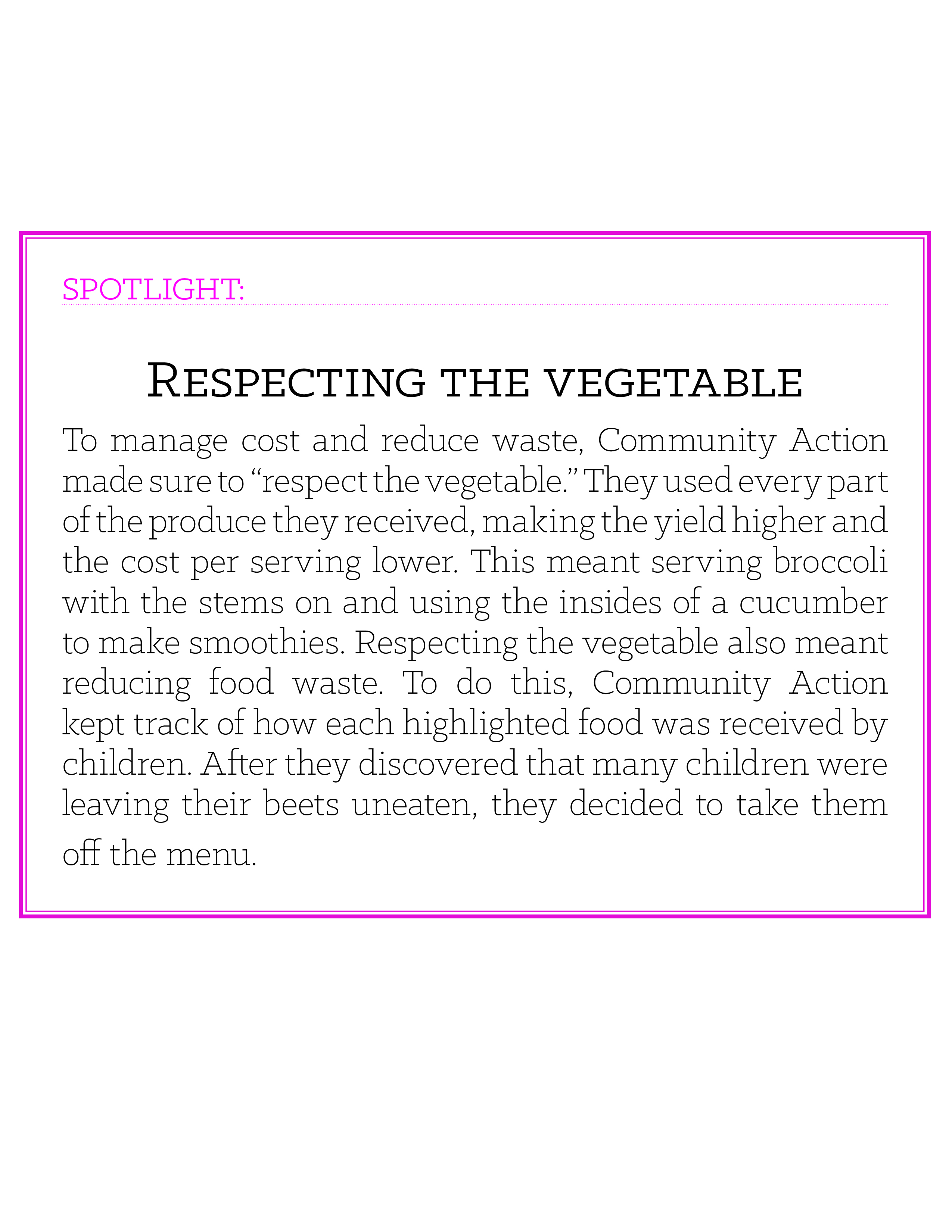
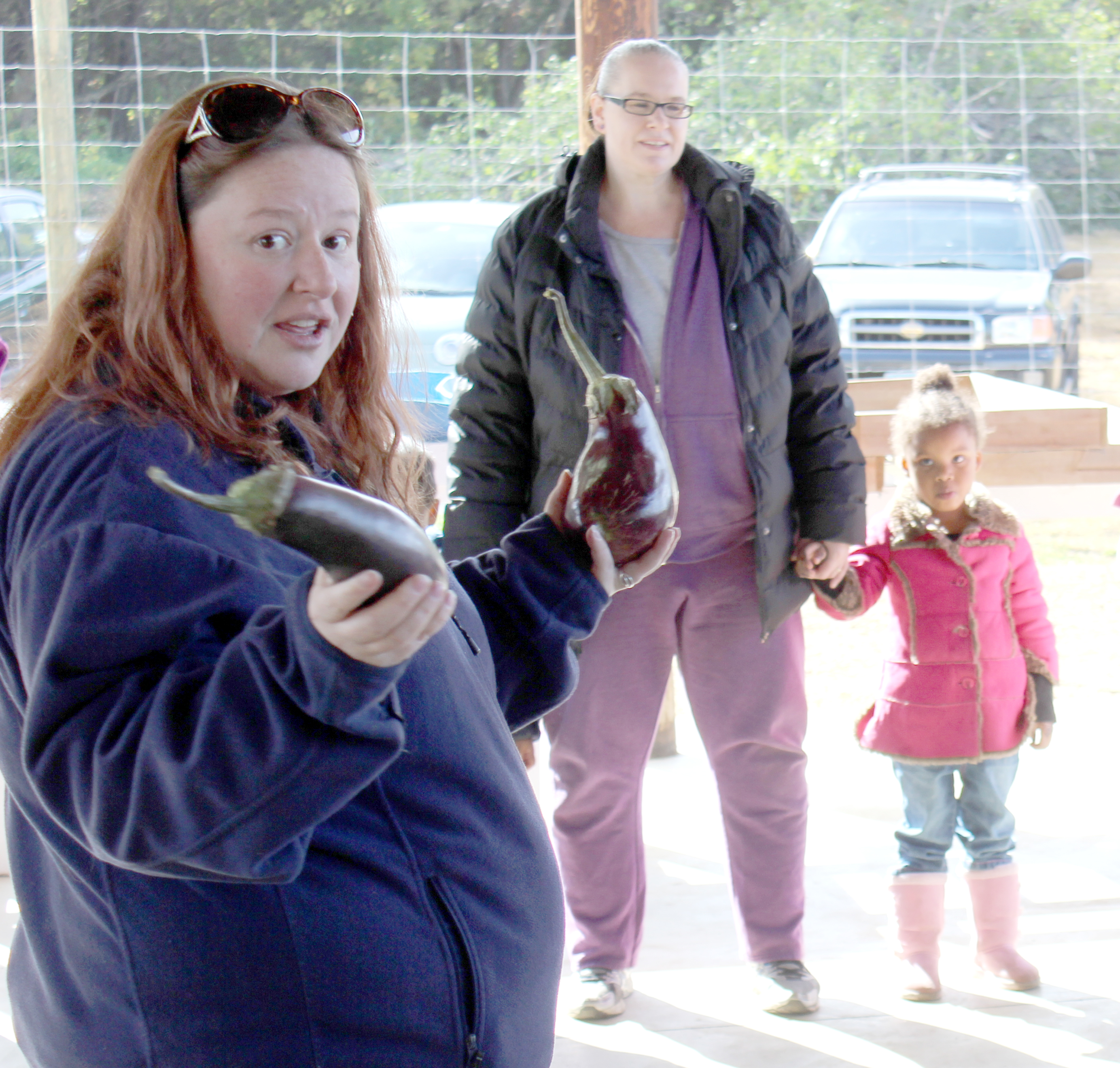
Advice for others
A strong connection between partners will give initiatives the strength and resiliency to push through setbacks. Prokop encourages anyone considering starting a Farm to Head Start initiative to find partners who share similar goals and visions. “The end goal has to be the same,” she advises.
She also recommends that anyone beginning a Farm to Head Start initiative be flexible and establish a strong communication framework with partners. Given Minnesota’s climate, and the somewhat unpredictable nature of farming, last-minute changes are bound to happen at some point. Prokop’s solution was to create a Google Sheet that she shared with all members of the Leadership Team. This spreadsheet contained information on highlighted foods, quantities, pricing and delivery dates. Every member could view and make changes to the shared spreadsheet in real time, by logging on to their Google Drive account.
Lastly, Prokop strongly encourages others to do their research.
“Reach out to other programs that have gone through it,” she said. “This will help with knowing potential challenges and barriers and help grow ideas you have for your own program.”
Download a PDF of the case study.
Watch the video on Community Action, IATP and HAFA.
Learn more about Farm to Head Start and read the other case studies.
Many thanks to Angela Prokop, Pakou Hang, and all of the partners at the Community Action Partnership of Ramsey and Washington Counties Head Start Program, the Hmong American Farmers Association, CKC Good Food Catering, Russ Davis Wholesale and beyond who contributed to the success of this Farm to Head Start effort!
Funding for this project is provided in part by the Center for Prevention at Blue Cross and Blue Shield of Minnesota and the Minnesota Department of Agriculture.


